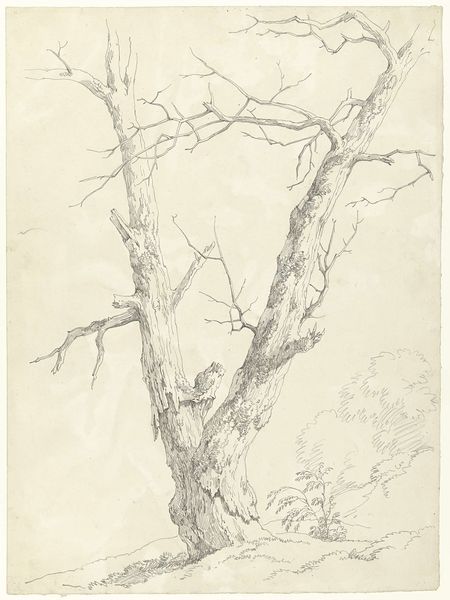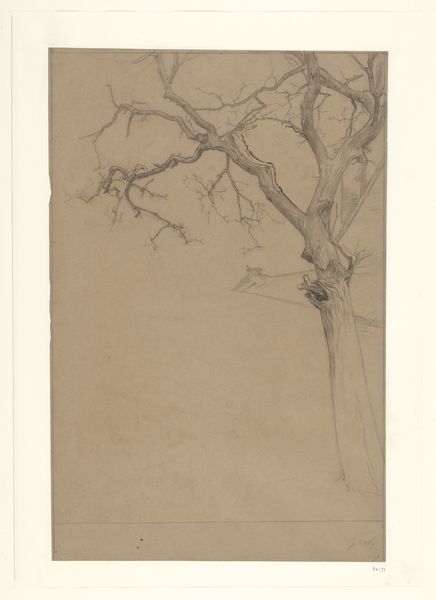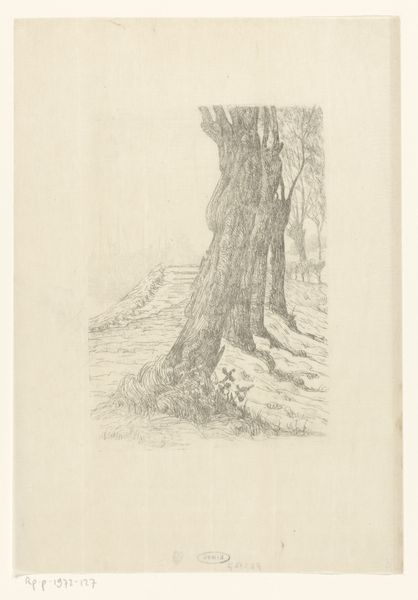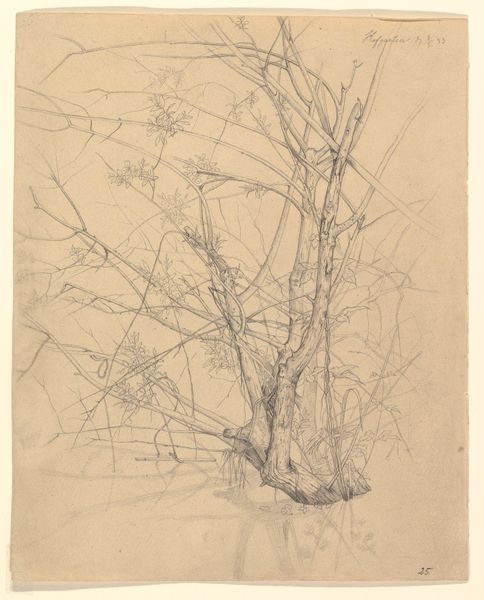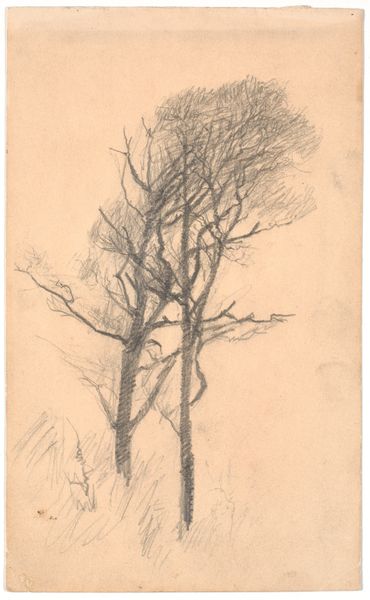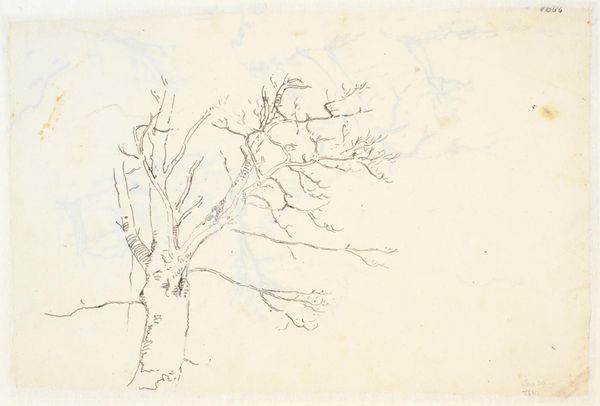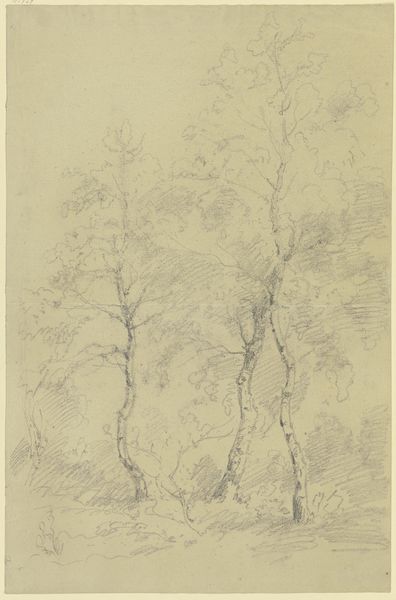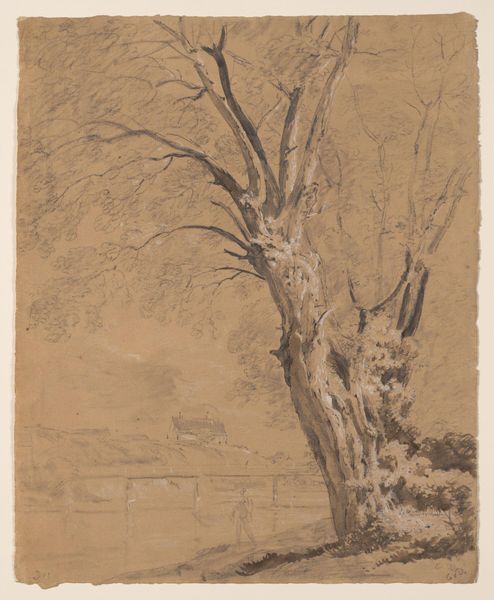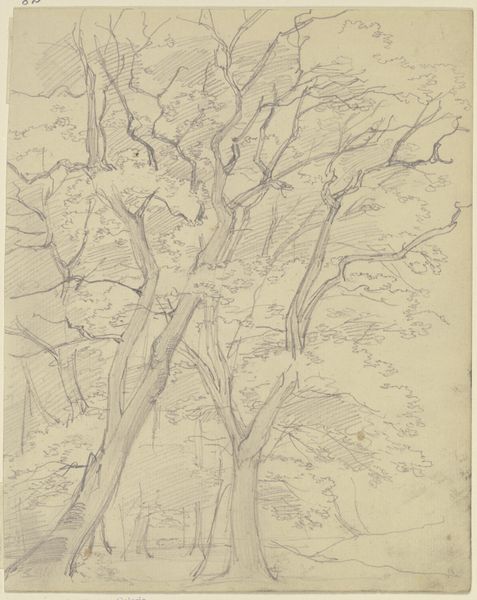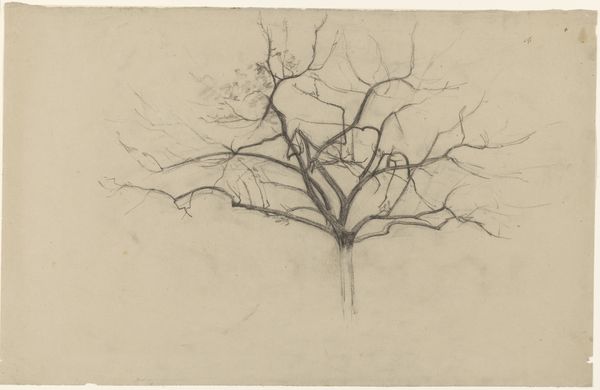
Dimensions: height 419 mm, width 322 mm
Copyright: Rijks Museum: Open Domain
Carl Spitzweg made this tree study with pencil on paper in the 19th century. The drawing’s pale and restrained palette emphasizes structure and form. The central vertical trunk anchors the composition. The artist used delicate lines to define the branches, capturing their intricate, reaching forms. Note how the artist varies the pressure of the pencil to suggest depth and texture. Spitzweg was part of the Biedermeier movement, which favored intimate and detailed depictions of everyday life. But in this study, he moved beyond mere representation, exploring the tree's architecture and its underlying structure. Think of this as a semiotic system, where the tree stands as a sign. The branches, with their various lines, might represent the complexities and branching paths of life. Consider how Spitzweg's work, while seemingly simple, engages with broader philosophical questions about nature, representation, and the human experience. The subtle formal qualities of the drawing reflect not just aesthetic choices, but also deeper cultural and intellectual currents of the time. Art invites continuous dialogue and diverse interpretations.
Comments
No comments
Be the first to comment and join the conversation on the ultimate creative platform.
